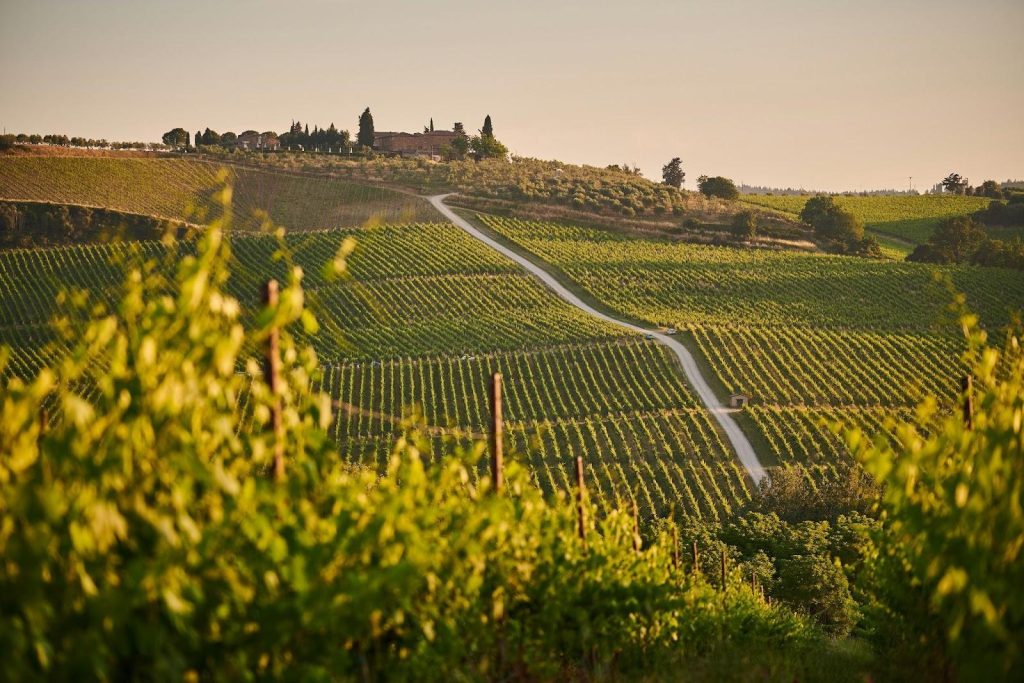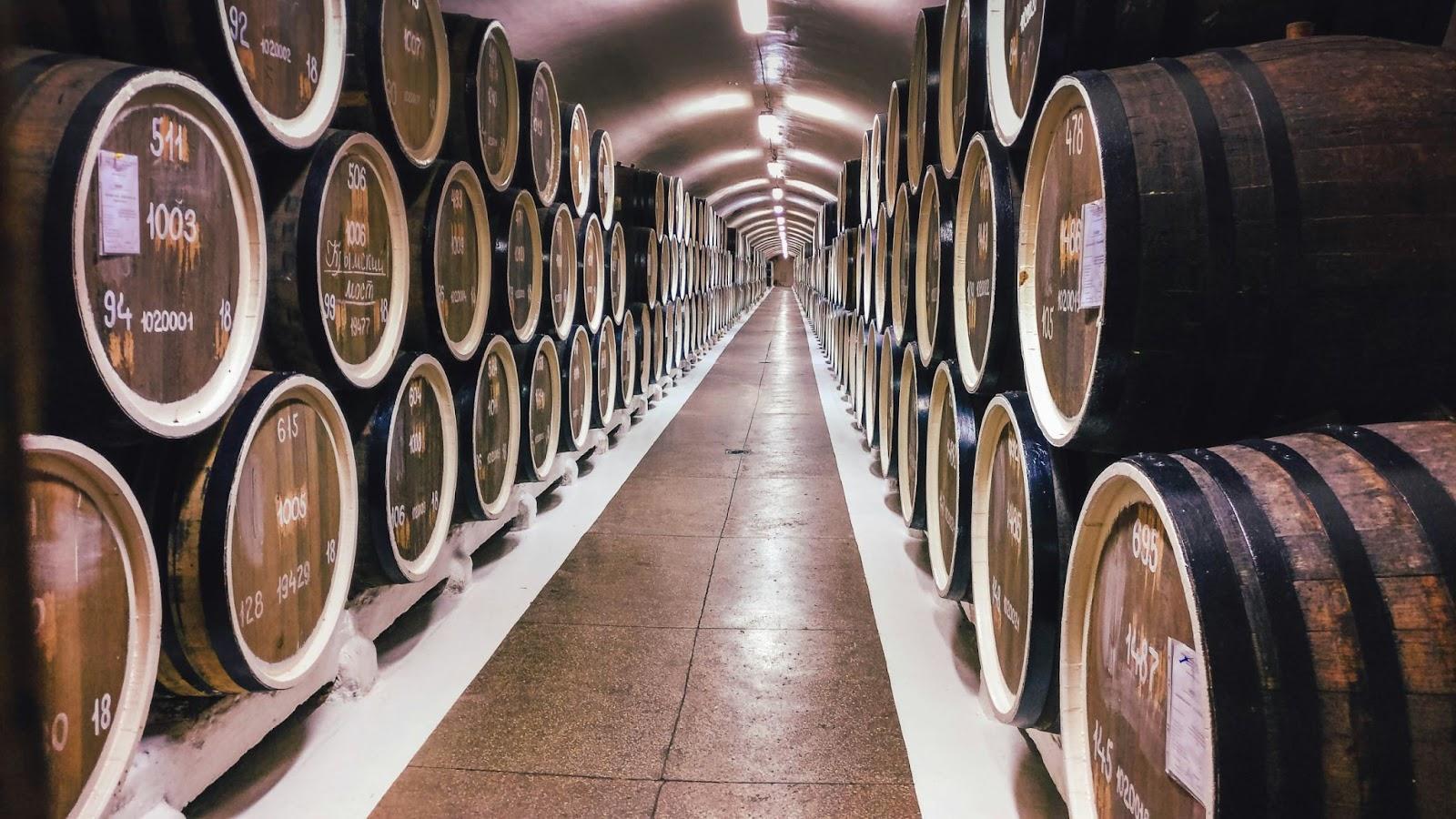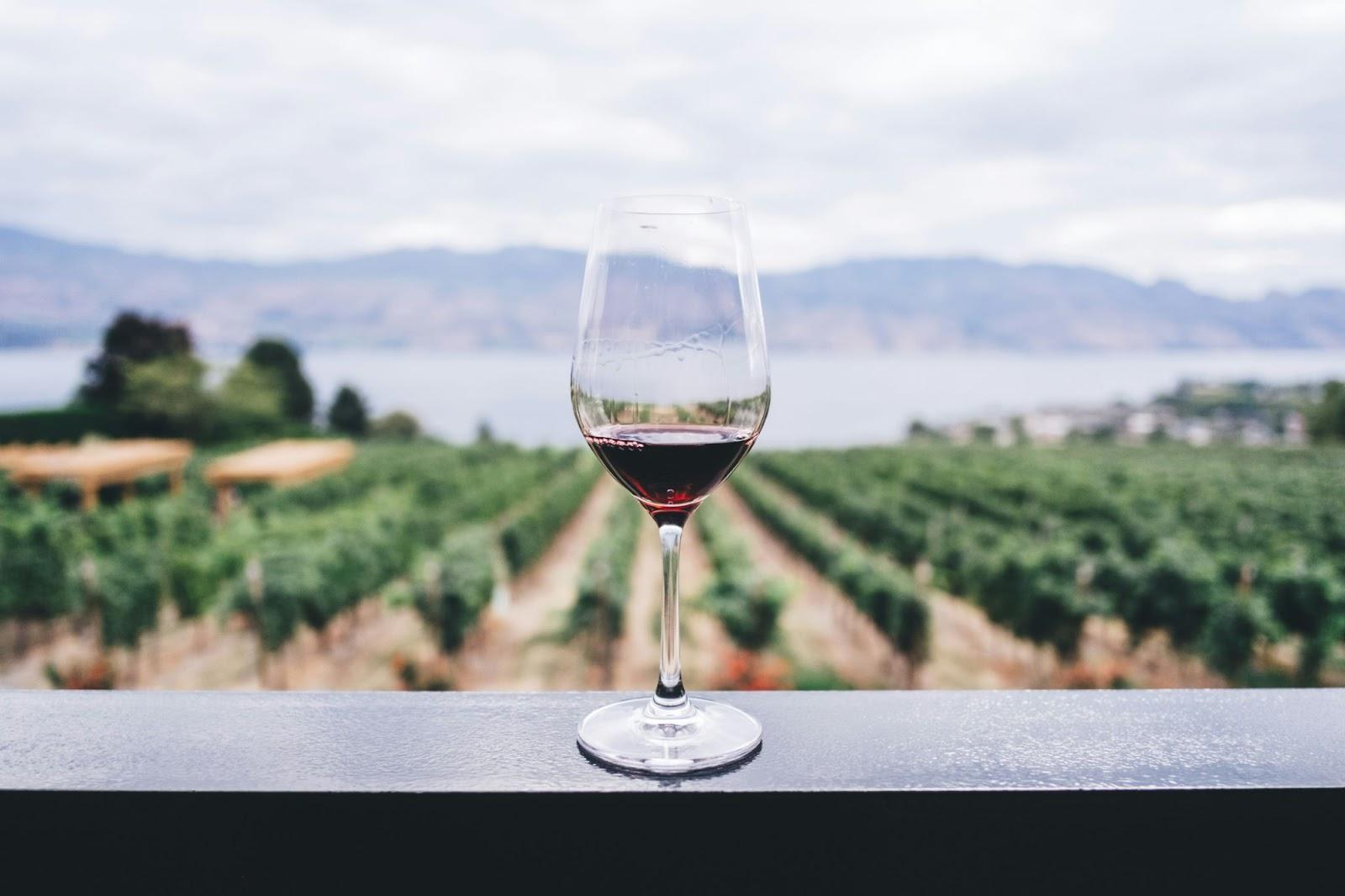In this guide, we will look at the differences between vineyards and wineries and why both matter. Whether you are a wine lover, grower, or just exploring what both offer, this guide will help you understand the difference between wineries and vineyards.
Understanding Vineyards and Wineries
Many people use these terms interchangeably since they are both associated with wine production. But that’s inaccurate and also confusing.
You should know what to expect to prioritize the experience that fits your preferences best. Let’s get into it.
What Is a Vineyard?
A vineyard is a plantation where grapevines are cultivated for wine production. The primary focus of vineyards is the viticulture aspect of winemaking. They are located in areas with favorable climates, soil, and elevation (also known as terroir) that support the growth of healthy grapes.
In most cases, vineyards are picturesque locations with rows of vines and rolling hills to produce high-quality grapes.
What Is a Winery?
A winery is a licensed place where grapes are processed to produce wine. Its primary focus is the production and bottling of wine. Typically, the grapes are sourced from the vineyards.
So instead of a beautiful natural landscape, you’ll find elegantly decorated tasting rooms in wineries. Fancy a peek behind the curtain? Many offer tours that show guests the whole process of wine production, including the use of fermentation tanks, barrel rooms, and bottling lines.
That being said, each winery tends to have its own unique character. Some wineries can be commercial, producing millions of cases per year, while others are boutique operations producing less than 5000 cases per year.
The Relationship Between Vineyards and Wineries
Despite their unique roles, vineyards and wineries are both important in the production of high-quality wine. The quality of grapes from the vineyards directly affects the quality of wine produced in the winery, but a good grape alone isn’t anything without a seasoned winemaker who has mastered the craft. In essence, without one, the other simply can’t work its magic.
Wineries actually work together with viticulturists to source the highest quality of grapes. They are not competing with each other but rather complementing each other’s roles.
The Differences Between Wineries and Vineyards
It’s the marriage of quality ingredients from the vineyards and skill from the wineries that makes wine happen. But this doesn’t mean that they don’t share key differences. Here are some you should know:
Function
The primary function of a vineyard is to grow the grapes and ensure they are of high quality when harvesting.
It revolves around viticulture, which is selecting the best location and grape varieties for the location, monitoring the weather conditions, controlling pests and diseases, and ensuring the right irrigation practices. Vineyards today are also tasked with considering sustainable practices when growing the vines. Many vineyards offer tours for those wanting to learn about plantations and production. Don’t forget to read our what to wear to a vineyard guide before you visit one so your attire is spot on for your visit!
On the other hand, a winery turns the harvested grapes into wine. Here, the grapes are crushed, fermented, aged, blended, and bottled. Some wineries specialize in specific types of wine, like red, white, or sparkling, while others produce all types.
Location
Vineyards are situated outdoors within large stretches of land, sometimes even on gentle slopes.
In Bali, they take on an exotic flavor with most vineyards being situated along the northern coast. Here, the volcanic soils create the perfect conditions for tropical grape varieties. As you can guess, these grapes taste different than ones found in other regions of the world.
In contrast, wineries are in controlled indoor environments. Many have on-site wine bars or tasting rooms that guests can enjoy, but the experience isn’t centered around nature. They have different rooms depending on the stages of the winemaking process, from crushing, fermentation, aging, and bottling. Some wineries also have outdoor spaces where people can tour and taste the wine.
What to Expect in a Vineyard or Winery
For curious people who like to know how the sausage is made or are simply keen learners, a visit to the vineyards is perfect.
You walk along the rows of vines, while an experienced guide explains the process of growing and harvesting the vines in almost a poetic way.
Still have some curiosity that needs to be sated? Enjoy the breeze and start a conversation with the owner or your group to see what comes up. One of the best parts of enjoying wine is discussing it, and a vineyard is the ultimate place for it.
Wineries, on the other hand, can be a lot of fun to visit, whether you grew up in a culture that embraced wine or not.
You will likely start with a guided tour of the different stages of winemaking, while getting to experience local flavors. Some wine tasting may also include bottles not offered for sale in commercial establishments, offering a unique chance to relish exclusive wines.
Activities
In most vineyards, you can have a tour of the vineyard either on foot or in a vehicle. We recommend visiting during the seasonal harvesting time, so you can have hands-on experience. It allows you to slow down, soak in the sun and your idyllic environment, and let your thoughts slow down just for a while. A true escape from the mundane.
Wineries, on the other hand, are open to a diverse range of activities such as hiking, wine tasting, and tours. It all depends on the winery itself.
We personally love a winery with larger spaces where you can enjoy some outdoor time as well. Visiting with a group? Book in advance and you might just secure a private tasting for your group alone.
Ownership
Some vineyards are purely growers and sell their produce to independent wineries for processing. Others are owned by wineries, ensuring they have complete control over the grape quality and production.
Similarly, some wineries are purely producers that buy grapes from vineyards, or they may have their own vineyards to ensure the quality of their wine.
Conclusion
The wine journey begins in the vineyards, with the cultivation of the grapes and ends in the winery with the production of the wine. Vineyards and wineries are both essential for creating high-quality wines, with each having unique roles.
By understanding the differences between a vineyard and a winery, you can immerse yourself in the appreciation for the art and science that goes into winemaking, all while enjoying every sip.
Enjoy the Best Wines at Belle Wine Bar!
Not sure where to go on this side of the world for a wine-centric night? You can’t go wrong with a bar where exceptional staff handpick local flavors and pair it with delightful snacks and main courses. That’s us at Belle Wine Bar!



